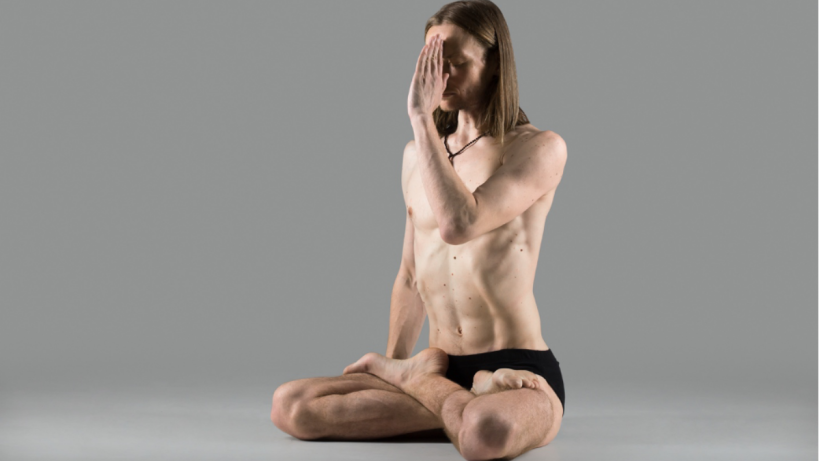Hectic daily schedules along with unbalanced routines impact health. With the progress of science and technology, work speed has also increased. Businesses are running to grow fast and excel in all products they are launching. All employees are expected to meet specified targets and do better to satisfy their employers.
With increasing stress, diseases are also increasing. With abnormal state of our body, structure and parts of our body are also affected along with its functioning. To cure this abnormal state, we involve ourselves in several expensive tests, high doses of medication, and many therapies. To avoid expensive tests and therapies, we owe ancestors for our healing.
Yoga and meditation, along with the right diet and lifestyle, help combat the effect of various diseases. Besides being a mental booster, yoga also decreases pain and discomfort in many parts of our body and facilitates better organ functioning. This is why there is a rise in the number of yoga schools in Rishikesh.
One of the major problems people are facing nowadays is gastric issues. It occurs because of stomach problems when acids from your stomach contact the food pipe. People who have diabetes also suffer from heartburn and gastric more because of nerve damage in control of the low oesophagal sphincter. It is the valve that is present at the entrance of the stomach. After having a meal, when you lay down, the lower esophageal sphincter cannot tighten itself, which in turn allows the acid content to flow back into the food pipe, thereby resulting in gastric issues along with a burning sensation and irritation.
According to Ayurveda, our health issues arises because of an imbalance between three major elements or doshas called Vatta, pitta and Kapha. When they are in perfect balance, you will remain perfectly healthy. But when they are not in balance, it can lead to various health issues. Gastric problems arise because of Vatta dosha imbalance. When you calm your vatta, it assists in getting rid of gastric issues.
Are you feeling bloated and uneasy often? Then this might be because of poor digestion and gastric. Your digestive system works all over the day to break down the food you are eating and provide energy.
Here are a few Yoga Asanas that help Alleviate Gastric Problems and Make your gut Strong.
All the following yoga asanas mainly focus on balancing Doshas. It calms our Vatta dosha. They benefit by incorporating required breathing methods that impact our gastrointestinal organs.
1. Pawanmuktasana
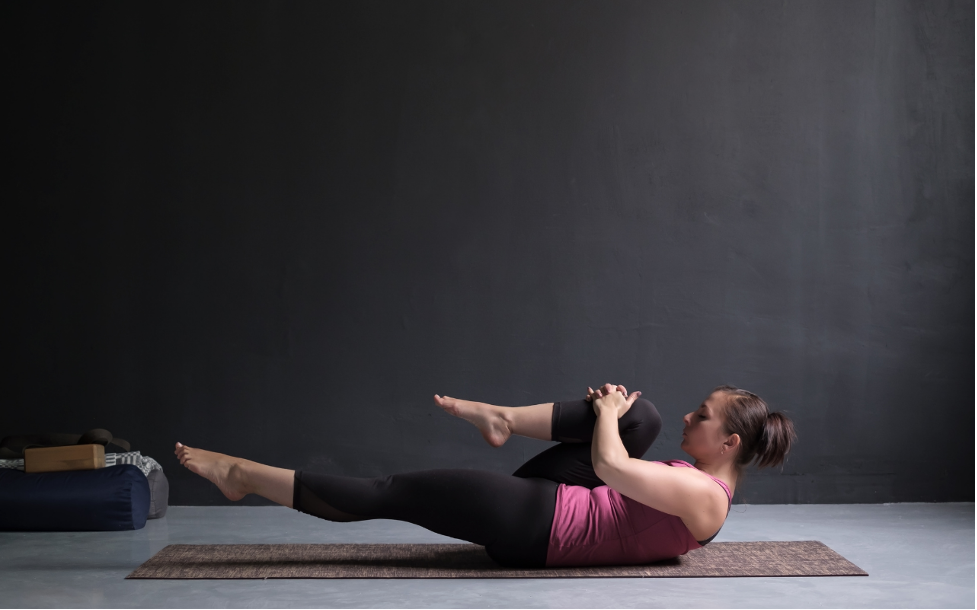
It is also called wind release pose or gas release pose. As the name suggests, “Pawan ” means wind or gas, and Mukta means to release or relief. His is an asana that assists in relieving gas present in our stomach. Gas is created because of improper digestion, and it also leads to several other problems other than stomach discomforts, such as joint pain and migraine. You will learn more on this asanas at the 200 Hour Yoga Teacher Training in Rishikesh.
How does it Benefit?
- It assists in getting relief from the gas that forms because of indigestion.
- It works on your muscles in the back, hips, biceps and triceps.
What to do?
- At first, lie down flat on your mat. Stretch your legs and arms and take some breaths. This is the first pose.
- Now make your knees flexible, so your legs make a right angle with thighs.
- Start exhaling and bring your knees closer to your chest.
- Now raise your head for bringing it close to your knees.
- Hold on to this position for a few seconds and then release.
- Keep your breathing normal while holding on to this pose.
2. Balasana
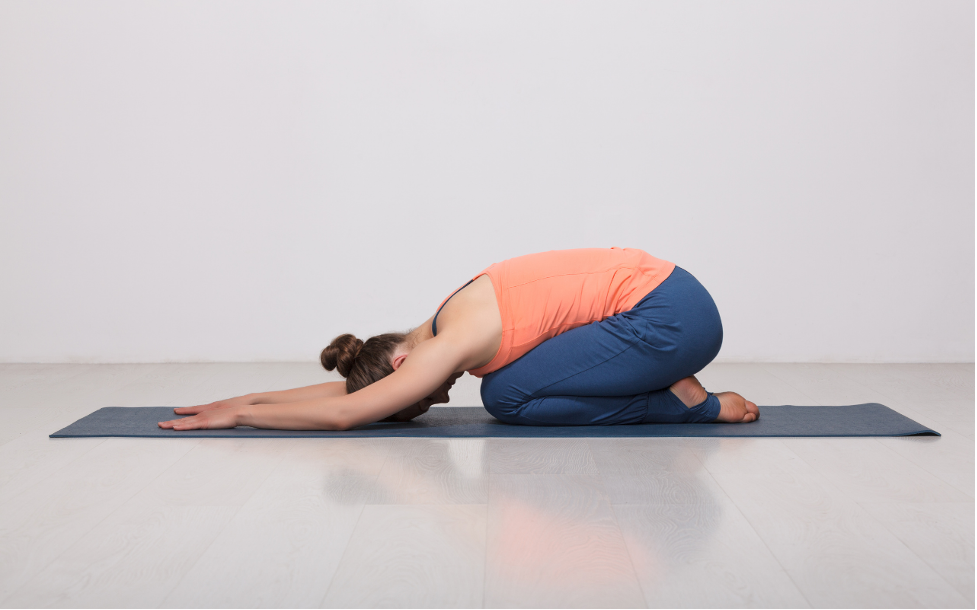
This yoga pose is also called Garbhasana as well as Shashankasana. It means children pose, whereas Bala means child, and asana means posture. This yoga is mainly done as end yoga that focuses on proper breathing techniques. The breathing must be long, steady, thin and gradual. The main concept here is to exhale during flexing and inhale while stretching.
How does it benefit you?
- It helps in getting relief from fatigue, stress and anxiety.
- Enhances digestion
- Treats back pain.
What to do?
- Move your knees and sit on your heels in a kneeling position.
- Start with exhaling. Stretch your hands into the air at a right angle at your shoulder level.
- Bend at your hips and then bend forward in a way that your forehead will touch the floor.
- Hold on in this position for a few seconds while breathing normally and then go back to the initial pose while inhaling.
3. Paschimottanasana
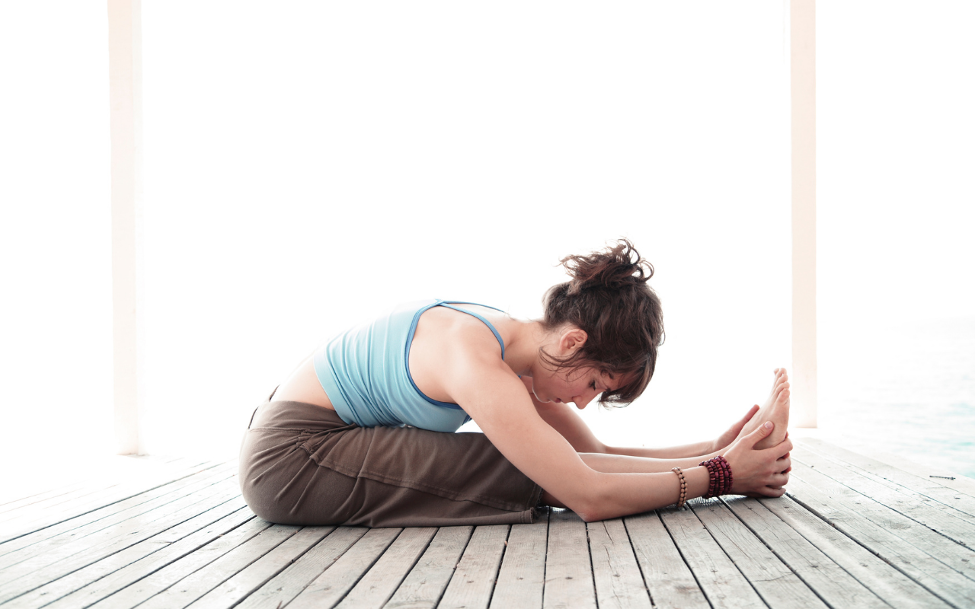
This pose is also known as the seated forward bend pose. It is one of the basic asanas which is done while sitting. As the name suggests, this is an asana that focuses mainly on moving the hip joint by making it flexible.
How does it benefit?
- When the body stretches forward, pressure increases on digestive organs. This enhances digestion and thus helps in curing gastric related problems.
- It has a relaxing and calming effect on your whole body. It also decreases stress.
- Your vertebral column also moves and offers it a perfect shape. It also helps people having back pain.
- It is good for those who have diabetes as well as liver issues.
What to do?
- Sit on a mat while stretching your legs. Flex at your hips starting from the lower back. Your hand should remain close to your feet, and your chest should remain close to your knees.
- Hold on to this position for some seconds while continuing normal breathing. Do not lift your knees or head up, and then get back to the initial position while inhaling.
4. Supta Matsyendrasana
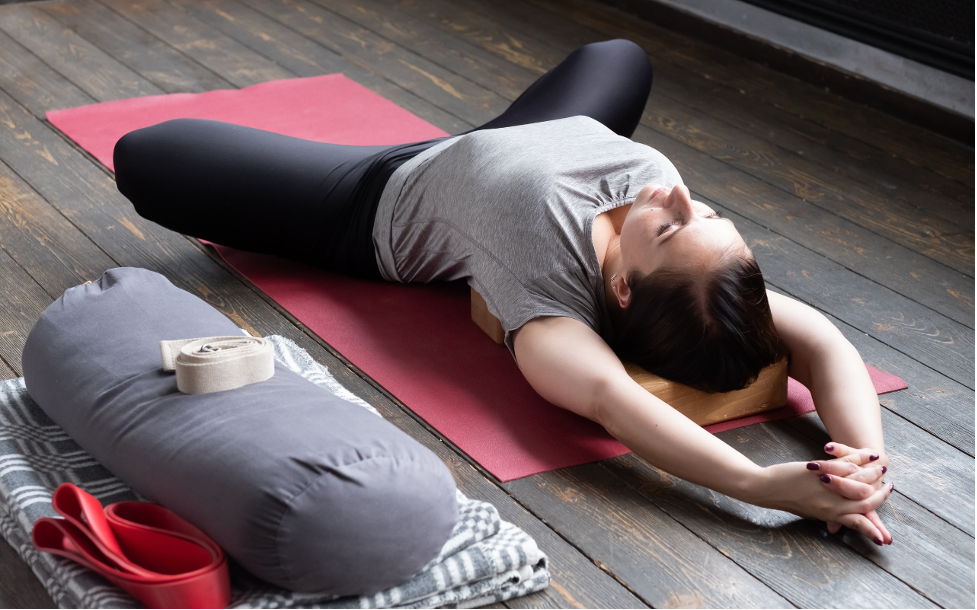
The word SuptaMatsyendrasana has its main root in Sanskrit. The word supta means reclining, Matsya means fish, and Endra means Lord Indra. So, collectively it is called Lord of fishes. This asana is an altered form of Ardha Matsyendrasana, carried out in a sitting position. It primarily focuses on the spine and abdomen while twisting them. This is why many people refer to this pose as a twisted spine pose.
How does it benefit?
- It enhances spine flexibility and offers it a perfect shape.
- Decreases incidence of back problems.
- It assists patients suffering from insomnia by alleviating body as well as mind fatigues.
- Enhances digestion and cure gastric issues.
- It exercises internal organs.
What to do?
- Lie down flat over your mat on your back.
- Stretch your shoulder sideways to your sides so that they lie down in line with your shoulder.
- Start with exhaling. Move your right knee towards your chest. Cross it over the midline so that your right knee touches the floor on your left side.
- Concurrently expand your neck towards the opposite side so that your head will face left.
- Hold on to this position for a few seconds and return to the initial position.
- Repeat the pose using the opposite leg.
- Inhale and come to the centre and then exhale. Change to the opposite side and then hold on with normal breathing.
5. Ananda Balasana
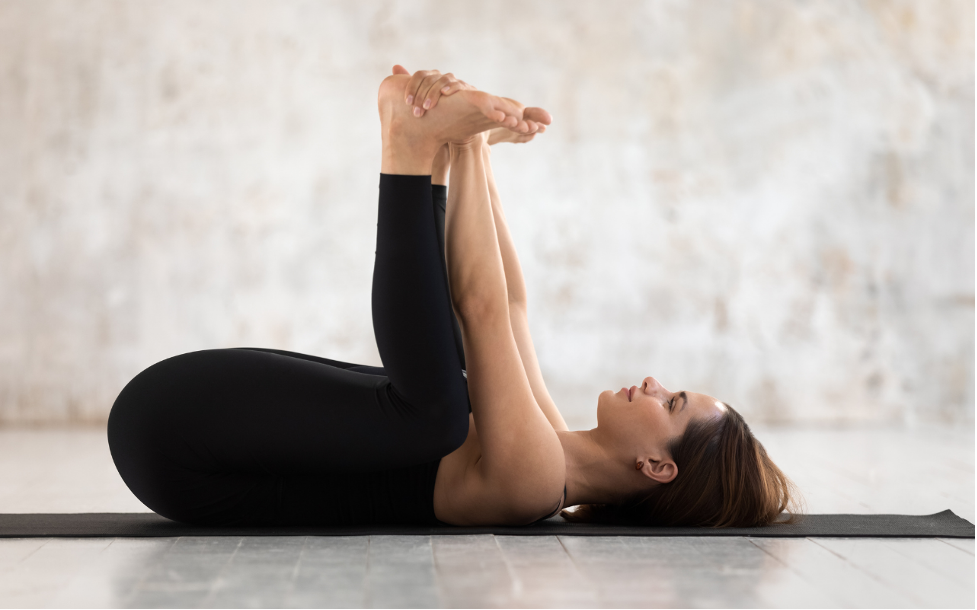
It is a modified form of Balasana. It is also called the happy baby pose as per the name. Ananda means content, and Bala means baby. Some also refer to it as a dead bug pose. But the comfortable baby pose is accepted more because of optimism. It is mainly done as warm-up yoga for preparing someone before migrating to any intense yoga asanas.
How does it benefit?
Muscles of your hip, thigh, triceps and biceps stretch.
Enhances heart rate
Offers a good shape to the spine and helps in elongating it.
Benefits patients are suffering from back pain.
Enhances digestion and cures gastric issues.
What to do?
- Lie down on your back flat over a mat.
- While exhaling, bend your knees, coming close to your chest.
- Hold on your feet thumb with the required hands.
- Hold on to this position for seconds with a normal breathing pattern and then loosen.
- Start inhaling while loosening to go back to the initial pose.
Conclusion
Yoga is one of the best ways for treating health-related issues. When done properly, there are no side effects.
Laila Azzahra is a professional writer and blogger that loves to write about technology, business, entertainment, science, and health.
